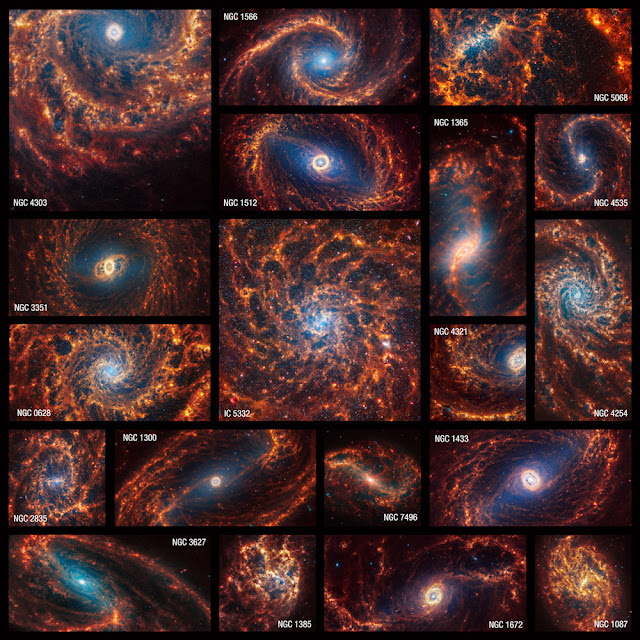Webb Wednesday

The James Webb Telescope observed 19 nearby spiral galaxies in near- and mid-infrared light. Webb's NIRCam (Near-infrared) captured millions of stars in these images, which sparkle in blue tones. The MIRI (mid-infrared instrument) highlights the glowing dust, and the stars that aren't fully formed, still encased in gas, as the red dots. This is part of an ongoing project with the PHANGS program (Physics at High Angular resolution in Nearby GalaxieS). The team also has data from Hubble, the Very Large Telescope's Multi Unit Spectroscopic Explorer, and the Atacama Large Millimeter/submillimeter Array, which includes observations in ultraviolet, visible, and radio light. Here we have NGC 628 split diagonally with Webb imagery at top left and Hubble at bottom right. This galaxy is 32 million lightyears away, in the constellation Pisces. Article


